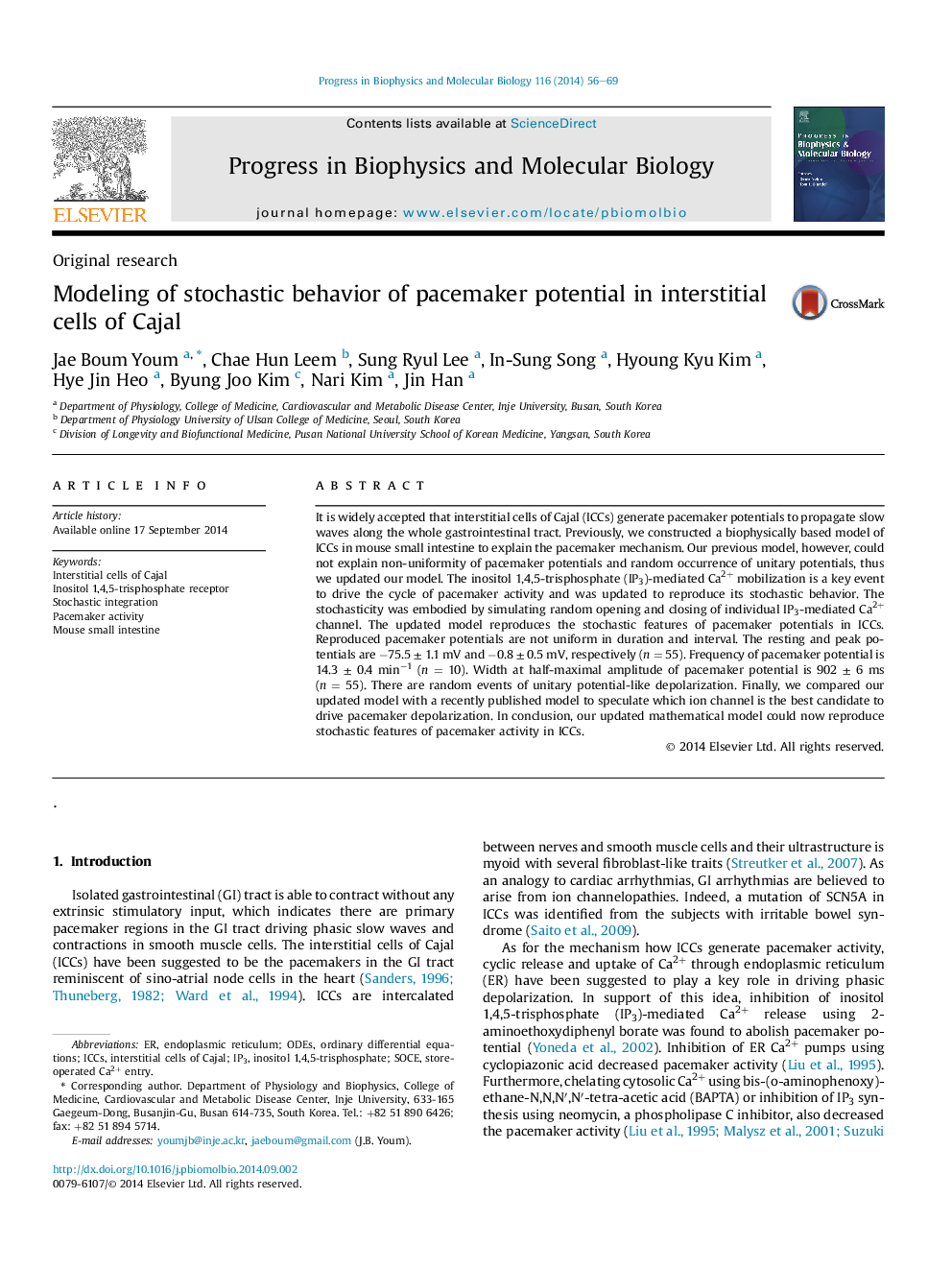| Article ID | Journal | Published Year | Pages | File Type |
|---|---|---|---|---|
| 2070534 | Progress in Biophysics and Molecular Biology | 2014 | 14 Pages |
It is widely accepted that interstitial cells of Cajal (ICCs) generate pacemaker potentials to propagate slow waves along the whole gastrointestinal tract. Previously, we constructed a biophysically based model of ICCs in mouse small intestine to explain the pacemaker mechanism. Our previous model, however, could not explain non-uniformity of pacemaker potentials and random occurrence of unitary potentials, thus we updated our model. The inositol 1,4,5-trisphosphate (IP3)-mediated Ca2+ mobilization is a key event to drive the cycle of pacemaker activity and was updated to reproduce its stochastic behavior. The stochasticity was embodied by simulating random opening and closing of individual IP3-mediated Ca2+ channel. The updated model reproduces the stochastic features of pacemaker potentials in ICCs. Reproduced pacemaker potentials are not uniform in duration and interval. The resting and peak potentials are −75.5 ± 1.1 mV and −0.8 ± 0.5 mV, respectively (n = 55). Frequency of pacemaker potential is 14.3 ± 0.4 min−1 (n = 10). Width at half-maximal amplitude of pacemaker potential is 902 ± 6 ms (n = 55). There are random events of unitary potential-like depolarization. Finally, we compared our updated model with a recently published model to speculate which ion channel is the best candidate to drive pacemaker depolarization. In conclusion, our updated mathematical model could now reproduce stochastic features of pacemaker activity in ICCs.
